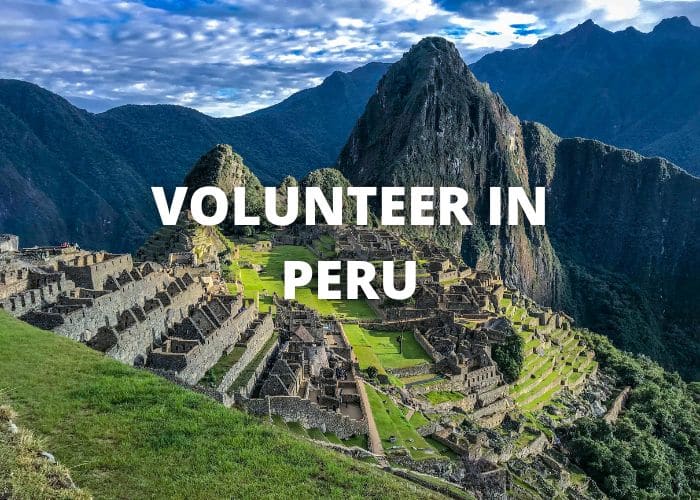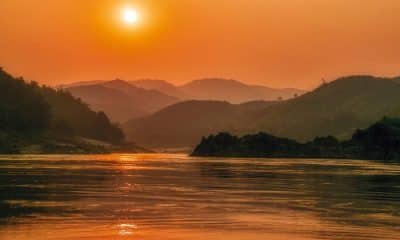Peru
Best Places to Visit in Peru
When planning your trip to Peru, you can get the most out of your visit by getting the inside scoop from locals. They can help you design an immersive itinerary and make you feel at home in their country. A great way to get a personalized travel guide is through a service like ViaHero, which connects you with locals.

Tawllirahu
Located in the Huaylas Province, Tawllirahu is a mountain that rises 5,830 meters. It is part of Huascaran National Park and lies east of Rinrihirka. The mountain is not an easy climb, but is well worth the effort. The south-southeast ridge and south buttress are TD-level, while the east buttress and southwest face are rated ED1/ED2.
The surrounding jungle is full of dense trees, cacti, and ferns. This lush ecosystem is home to a wide variety of wildlife. There are plenty of places to shop, dine, and drink. There are also many excellent restaurants where you can sample highland cuisine, such as rice dishes and spice-drenched chicken. There is nightlife in the area, and the Amazon River is nearby.
One of the best places to visit in Peru is Huaraz, an oasis town perched high on a mountain range. It is best visited by 4X4 to take in the scenery. The town is also known for its famous Huascaran National Park, home to dinosaur footprints and titanka plants. You can also go sandboarding and mountain biking in this region.
While you are in Peru, don’t miss the incredible archaeological ruins of Machu Picchu. The lost Inca city is an unmissable place for tourists. You can also visit the Sacred Valley, home to some of the country’s most impressive ruins.
Nearby are the Tambopata National Reserve and the Bahuaja-Sonene National Park. These are popular destinations for hikers and mountain climbers, as well as for those interested in history.
Huacachina
If you’re looking for an adrenaline-filled adventure, Huacachina is the place to go. Here, you can bungee jump, go on a paddle-boat tour, and enjoy exotic gardens. It’s also possible to go sandboarding, which is optional.
The region enjoys consistent warm weather, which makes it suitable to visit year-round. The temperature is around 67oF in winter and 70oF in summer. You can explore Huacachina at any time of year, but the best time to go is between April and July, when temperatures are at their warmest. However, be warned: this is also the peak tourist season, when the town gets very crowded.
Huacachina is a small town, so you should try to get to know the locals by speaking their language. The town is safe and has well-lit streets. You shouldn’t have any problems walking on your own at night. In addition to the safe environment, tourists can enjoy the culture of local people in the town. In addition, the town has several bars and restaurants, so there is plenty to do at night.
If you’re looking for a spectacular escape from the bustling city of Lima, Huacachina is definitely worth a visit. Its stunning landscapes and otherworldly sunsets make it one of the best places to visit in Peru.
You can also enjoy some delicious Peruvian food in Huacachina. In addition to traditional Peruvian dishes, the town also offers some vegan options.
Machu Picchu
One of the best places to visit in Peru is the UNESCO-listed ruins of Machu Picchu. This ancient city is surrounded by stunning mountains, making it one of the world’s most picturesque sites. The Incas built this city as an estate, and it was left in ruins following the Spanish Conquest. Today, it is considered one of the world’s seven wonders.
Aside from Machu Picchu, you can also visit the Sacred Valley, a former agricultural center of the Incan Empire. Today, the region attracts tourists from around the world. The region is also home to several preserved Inca temples and forts.
While it is possible to visit Machu Picchu throughout the year, the rainy season is from October to April. The weather in Peru is unpredictable, so visit in the afternoon to avoid the heat and crowds. The rainy season can also make the area foggy. Although the park is open all year round, July and August tend to be the busiest months. Remember that local residents can enter the site for free. In addition, there is a daily quota of 2,500 paying visitors. Due to the coronavirus epidemic, this has been lowered to about a thousand and a half.
The journey to Machu Picchu will involve hiking the Inca Trail or taking a train from Cusco. There is a train from Cusco that runs to the town of Agua Caliente. On the return journey, you will get to enjoy the beautiful vistas of Peru. On the way, you’ll have the option to enjoy snacks and drinks.
You can explore the rainforest, ruins of the Incas, and awe-inspiring landscapes during your trip. Machu Picchu is a must-visit on your trip, but you can also explore the Sacred Valley, the world’s highest navigable lake, and the deepest canyon. You can also discover the Nazca lines, which are a fascinating mystery. Cusco is one of the most beautiful cities in South America.
Huascaran National Park
Located in the tropical Cordillera Blanca mountains of western Peru, Huascaran National Park is home to snow-capped Mount Huascaran and hundreds of lakes and glaciers. Lake Llanganuco is a brilliant blue and Laguna 69 is renowned for its turquoise water. In addition to stunning scenery, you can spot pumas, Andean condors, and spectacled bears in Huascaran National Park.
The small town of Yungay lies at the base of Huascaran Sur and is a good base to explore this region. It’s located along Route 106, one of the four roads that cross the Cordillera Blanca. The town was rebuilt following the 1970 earthquake, which destroyed much of the village. It is considered one of the worst natural disasters in Peru’s history.
The mountains of Huascaran National Park are among the highest in the world. They are part of the Cordillera Blanca, the tallest mountain range in South America. The park has numerous glacial lakes and deep ravines that are watered by torrents. There are also many endemic species of birds, including the spectacled bear and the Andean condor.
The national park was founded in 1975 and has been recognized by UNESCO as a Biosphere Reserve. In 1977, it was also recognized as a Natural World Heritage Site. It is one of the best places to visit in Peru for those who love the outdoors and hiking.
The park is high and rugged, but the ecosystems are delicately balanced. If you are interested in trekking in Huascaran, it’s best to book a tour with a reputable tourist company. You’ll need a specialized guide for certain activities. Depending on the season, you’ll want to consider the weather and altitude when planning a trip. The rainy season runs from December to March, while the prime tourist season is May to October.
Trujillo
Trujillo, Peru is a city rich in history. During the revolution, the town was a major political center and soon compensated for the loss by expanding its economic power. The sugar cane industry flourished in the Moche and Chicama valleys. As a result, land ownership grew to be linked to national political power. This economic boom brought Europeans to the area. By the early nineteenth century, the city was home to 15,000 people, and was beginning to grow beyond its city walls. It was during this time that the city adopted architectural styles influenced by English and French Romanticism.
The city has a lot to offer tourists. There are many historical sites to see, including the Moche temples and the marinera. There are also remnants of the ancient Chimu culture and colonial architecture, which make Trujillo one of the best places to visit in Peru.
The city is rich in history and culture, with many churches from the sixteenth to eighteenth centuries. Among them is the El Carmen Church, a beautiful 18th century structure with golden altars and dozens of paintings. Likewise, the San Agustin Church is another historic site. It is built in the Baroque style and has a wooden pulpit and altar.
Travelers can also get to Trujillo by bus or train. The city has a well-connected bus system, with several bus routes linking the city to various transit hubs in the area. Air transportation to Trujillo is also available, with flights leaving from Lima regularly throughout the day. These flights take about an hour and cost around $80.

Peru
Top 10 Things to Do in Peru
One of the top things to do in Peru is swimming with turtles. It’s a great experience that you should not miss! If you have never had the opportunity to swim with turtles, it’s a crime. There are many places in Peru where you can do this.

Machu Picchu
One of the top things to do in Peru is to see Machu Picchu, the ruins of an ancient city built by the Incas. The ruins were discovered in 1911 by a team of American archaeologists. They spent four years exploring the site, which is steeped in myth and mystery. It is a must-see destination for trekkers and explorers alike. However, a trip to this incredible site requires in-depth planning and detailed knowledge.
Getting to Machu Picchu is only the beginning of your trip to Peru. There are so many amazing sites to see. You can start by visiting Cusco, then head up the coast to Puno and the Sacred Valley. This route will allow you to see the Machu Picchu ruins, as well as some of the lesser-known sites.
You should also visit Kuelap, which is an ancient walled city in northern Peru. It once had over 400 buildings and was home to the Chachapoya people, also known as “Warriors of the Clouds.” The walls are up to 19 meters high and are home to some of the finest archaeology in Peru.
Another great option for exploring Machu Picchu is to take the Vistadome train. Although this option is not as popular as the Huayna Picchu trek, it takes three hours each way and offers plenty of photo opportunities. If you have the time, you may want to do both.
Apart from Machu Picchu, you should also visit the Nazca Lines. These ancient geoglyphs were created over two thousand years ago and are a UNESCO World Heritage Site. These ancient rock formations have survived the elements, including rain, erosion, and aridity.
Nazca Lines
If you’re looking for a truly amazing view, you can go up the observation tower at the Nazca Lines. A few dollars will buy you entrance and transportation, but the view is not as amazing as from an airplane. There are many options for viewing the Nazca Lines, including a plane ride or ground tours.
Visit the Maria Reiche Planetarium, which is located close to the Nazca Lines. There you’ll see the tools she used and other relics. The museum also features a collection of human skulls and tattooed mummies. There’s a small admission fee, but the museum is well worth the visit.
If you’re not interested in seeing the ancient ruins themselves, you can visit the Nazca cemetery, which is over a thousand years old. Inside, you’ll see dozens of mummies and trophy heads. Some tours combine a ceramic production class and a visit to the cemetery.
Nazca Lines: This site has many interpretations, from being a sacred road, an astronomical book, or messages from the gods. A historian named Paul Kosok made the discovery and conducted extensive research about the Nazca people. Though the lines have a complex meaning, there’s no doubt that they’re a fascinating site that’s worth exploring.
Nazca Lines: Known as the largest geoglyph collection in the world, the Nazca Lines stretch across 400km of desert land south of Lima. The intricate designs are believed to have been created by the ancient Nazca civilization. There are plane flights to fly over the lines to get an excellent view of the monuments from above. Another option is to watch from an observation tower on the Pan American Highway.
Nazca Lines: One of the most fascinating mysteries in the world. There are hundreds of line drawings that haven’t been explained. Some of the designs are geometric, while others are anthropomorphic. While some are still mysterious, it’s possible they were used for irrigation or as a prayer for rain.
Rainbow Mountains
If you want to experience a spectacular hike and stunning view of the Andes, the Rainbow Mountains are definitely worth a visit. These colorful mountains are among the top things to do in Peru. While the Rainbow Mountain trek is quite challenging, the views are worth it. You can see a variety of wildlife along the way, and you can also trek through a Mars-like valley.
In the Cusco region, you can visit Rainbow Mountains, also known as Montana de Siete Colores, a natural wonder famous for its bright colors. You may have seen a photo of the rainbow mountains online, but in person, the colors are far more vivid. The colors are so vibrant that they appear as if they are painted on the mountainside.
You can start your trip early in the morning and reach the Rainbow Mountains by noon. The trek is quite scenic, and you will also get to see a lot of cute alpacas and llamas. The hike should last about three hours and will reward you with breathtaking views of the surrounding area. This trek is best done from April to October, when the rainy season is over. The mountain is not covered in snow during this time, so you will have plenty of sunny days.
The Rainbow Mountains are an unmissable experience in Peru. Although they are difficult to reach, the view is well worth the effort. The Rainbow Mountain, formally called Mount Vinicunca, sits at about 5,200 meters above sea level. It is famous for its unique look and multicolored layers.
Cuy (guinea pig)
Cuy (guinea pig) is an integral part of the Peruvian cuisine and is now very popular in cities. The culinary treat is a part of mountain culture and many people raise Cuy in their homes. There are many options for tourists to try eating this tasty dish, including restaurants in Cusco and Huaraz. In addition, you can also order a delivery of the guinea pig with the help of a delivery motorcycle, known as Don Cuy.
Cuy is served a variety of ways, with many locals preferring to cook it. Among the top places to try it is in Cusco, where it is known as Cuy al Horno, which is considered a dish emblematic of the city. Cuy is traditionally prepared using minced garlic, salt, cumin, ground peanuts, and peppers. It is served with rice and sauce.
Cuy (guinea pig) is eaten by the Inca nobility. In ancient times, it was used to omen the future and was also a common sacrifice. The Incas also celebrated their pigs with a famous religious painting showing Jesus and his disciples eating guinea pigs. The guinea pig is also celebrated in popular games. In the town of Churin, there are dress up competitions for Cuys. Mock bullfights with Cuys are also held. The Lazy Dog Inn is an excellent place to experience this delicious delicacy.
Cuy is an integral part of Peruvian cuisine. It is popular in high-end Peruvian restaurants. In addition to its high nutritional value, guinea pig meat is also an environmentally friendly and ethical way to eat a rodent. Although the aesthetics of eating a rodent have caused controversy in some areas of Peruvian society, the growing demand for guinea pigs is helping rural women and families to learn sustainable methods of guinea pig farming and provide them with training and support. This has helped the industry in Peru address poverty.
Amazon rainforest
If you have a passion for nature, one of the top things to do in Peru is a trip to the Amazon rainforest. You can experience the rainforest’s biodiversity on a two-day tour, which is cheap and provides an excellent introduction to the region. You will also be able to spot pink dolphins, piranhas, wild sloths, and giant lily pads on the Amazon river. You can get to the Amazon through a flight from Iquitos, which is a two-hour flight from Lima. The flight is more expensive, but you will be able to spend more time in the jungle.
Another activity that you can try in the Amazon is hiking. The jungle is full of hiking trails, and you can also try mountain biking in the region. While walking through the forest, you will get to see some wildlife and learn about medicinal plants, which are often harvested from the rainforest. You can also visit local villages, participate in cultural activities like storytelling and fishing, and purchase handicrafts. It is also a great way to get an insight into the life of the people living in the rainforest.
The best time to go to the Amazon is in July and August. The water levels in the jungle aren’t too high, and the wildlife is abundant. However, you’ll still have to pay close attention to the rainy season, as some parts of the river may be impassable and hiking trails are restricted to a small area on the hills. You’ll also need to be prepared for mud, and you’ll need to make sure you’re prepared to get wet.
The Amazon rainforest is home to a plethora of animals, from howler monkeys to jaguars. The animals you’ll see here are protected thanks to decades of conservation efforts.
Peru
Volunteer Peru
Why volunteer in Peru? If you are interested in helping to change the lives of the people in Peru, read on to learn more about volunteer opportunities and the benefits of doing volunteer work in Peru. This article will provide you with the information you need to get started on your volunteer journey. It will also give you an overview of Peru and Peruvian culture.

Why volunteer in Peru?
Peru is an amazing country, full of beautiful landscapes, vibrant colors, and wonderful people. It’s also one of the world’s fastest-growing economies. While Peru’s economy is booming, it’s also one of the poorest. There are many opportunities to get involved with local social projects.
As a volunteer in Peru, you’ll gain invaluable experience and a better understanding of the world. In addition, you’ll see how people in the country live and work in different communities. You’ll experience the beauty of Peru’s landscapes, and gain insights into the country’s culture and tradition. You’ll also be immersed in a friendly local community and learn about the issues and people facing Peru.
The country is enchanting, from its ancient Incan ruins to its lush rainforest. The country is home to many volunteer opportunities, from working with local communities to supporting the country’s rural communities. The diversity of the country’s landscape and culture makes it the perfect travel destination for adventurers. And, if you’re a history buff, Peru has a wide range of programs to suit your interests.
Peru has a diverse array of volunteer projects, from rainforest surveys to dog shelters. In fact, many projects in Peru are dedicated to conserving the rainforest’s biodiversity. You can help out by cooking delicious Peruvian meals, feeding rescued animals, and even planting tree seeds. You can also volunteer in the Amazon rainforest, helping to restore trails and repair damaged closures.
Volunteering in Peru is an excellent way to experience Peru’s diverse culture. There are a wide range of projects available, from urban programs in Lima to rural projects in the Amazon Rainforest. From helping to build homes for stray dogs to providing medical care, Peru is an amazing destination for a volunteer.
Why Travel to Peru?
Volunteering in Peru can be an amazing experience. The country is home to many cultures and is incredibly welcoming. People are very open and friendly and you’ll be able to interact with the locals on a personal level. Volunteering in Peru also allows you to grow as a person and learn more about the country you’ll be working in.
Peru’s culture is a fascinating mix of pre-Columbian and European influences. The country’s food, music and dance showcase the diversity of cultures. You’ll be able to use the local currency, the Peruvian Sol. However, the country’s weather can be unpredictable. There are thirty-two different climate zones in the country. This means that you can experience both polar and subtropical climates in Peru.
Volunteer Opportunities in Peru
There are many ways to get involved in volunteer opportunities in Peru. Some organizations offer free placements while others charge a fee. Many projects are geared towards conservation and science. While these programs can be rewarding, they are also expensive. You can choose a project that is suited to your skills and interests.
Volunteer programs in Peru are a great way to help the world while enjoying a new culture. If you are traveling on a budget, a Peru volunteer program can be a great option. Volunteers stay with a host family who are generally well-screened and have previous experience hosting international volunteers. In return, they offer a comfortable and safe home, as well as shared bathrooms with running water and “western-style” toilets. Some host families also provide laundry services for a small fee.
Another good option is to volunteer with United Planet. This organization has flexible volunteer programs in Peru, and you’ll gain an inside view of local issues. This non-profit organization helps build a global community by connecting volunteers with communities in over 35 countries. United Planet volunteers work in local communities, meet locals, and engage with the local culture.
Depending on your skills, volunteering in Peru can include helping out with education or infrastructure. Educational programs can include creating daily activities, facilitating sports lessons, and teaching English to children. Other programs can involve building projects and outreach programs that improve villages. However, you will need to be aware of pickpockets.
Peru is an incredible South American country, with beautiful people and landscapes. While volunteering in Peru, you can benefit from the rich culture and history. You’ll also have the opportunity to help the local people, the environment, and animals. The Peruvian people are friendly and welcoming, and will give you a wonderful experience.
For those interested in caring for animals, you may be able to help with rehabilitation programs for rescued horses. You can also help animals in shelters by caring for them and helping them find new homes.
Why join Volunteer Programs in Peru?
Peru has an abundance of volunteer opportunities and you can choose to work in a variety of areas. Whether you’re a student or a professional, volunteering in Peru is an excellent way to learn about Peru’s culture and traditions, as well as help out in a field you’re passionate about. If you’re short on time, you can even choose to combine your volunteer program with a tour of Peru, which combines volunteer work with travel.
Many people in Peru are not able to access quality healthcare, and many rural clinics lack sufficient resources to provide quality care. You can help by volunteering in Peru’s healthcare system and gaining a deeper understanding of global health challenges. You can volunteer in local health clinics or assist in outreach campaigns.
You can also join Peru’s cultural exchange programs, which will involve living with a Peruvian host family for a while. This experience will help you practice your Spanish and English while living in a new environment. Most placement fees include accommodation, but you can also make arrangements on your own.
Peru is an ideal place for volunteer programs because the country has many beautiful attractions. You can visit the ancient Inca site, Machu Picchu, which is located at 2,430 metres above sea level. In addition, the country has an incredible number of hiking destinations in the Cordillera Blanca, the world’s highest mountain range. This range is perfect for hiking enthusiasts and offers many trails of various difficulties. Visiting these places can also allow you to explore local ecosystems and wildlife.
Volunteering in Peru’s poorer regions is an excellent way to make a difference. You can teach English to locals to help them obtain better-paying jobs and secure a better future for their families. Volunteer teaching English in Peru can be a rewarding experience, as long as you have the patience and flexibility to make it work.
Peru
Best Time to Visit Peru
The best time to visit Peru will depend on what part of the country you are visiting. Some regions have hotter weather than others. In this article, I’ll discuss the shoulder seasons and the dry season. You’ll also learn about the best time to visit Machu Picchu and Cusco. If you want to explore the Amazon and its ruins, then the dry season is a good choice. If you’re planning to visit Machu Picchu, consider visiting during the summer or late winter.

The dry season
April is an ideal time to visit Peru, with temperatures cooling off in the Andes while still remaining very warm in the rainforest. This is also the month when many festivals take place, including Semana Santa. Despite the cooler temperatures, Cuzco and the Andes are still booming with tourism. Moreover, the southern Amazon Basin is drying out, making roads easier to navigate. A trip to Peru in April will allow you to experience the country’s rich culture and festivities.
There are two main seasons in Peru: the wet season and the dry season. During the dry season, temperatures are warm and there is little chance of rain. This weather is perfect for exploring the archaeological sites, and you can experience the best views of the Andes. However, you should avoid visiting Peru in the rainy season, from December to March. There will be more rain during the rainy season, and temperatures will begin to cool as the sun sets.
In contrast to the wet season, the dry season occurs from April to October. During this time, the coastal fog lifts and temperatures in the interior decrease. During this time, it is possible to take a boat trip to the rarely visited mangrove forests near Tumbes and the rocky sealife sanctuary of Islas Ballestas near Paracas. During this time, you can also see sea lion pups.
Because Peru is a tropical country, there are two seasons – the wet season and the dry season. This makes it difficult to decide which is the best time to visit. Moreover, it is difficult to pinpoint an optimal time to visit Peru because the climate varies from region to region. Moreover, the country is divided into three geographical zones: the coastal region, the Amazon rainforest, and the Andean highlands.
The shoulder seasons
April-May is considered the shoulder season in Peru, when temperatures are cool and rainfall is at a minimum. This is also a time when there are fewer tourists and fewer hikers than in high season. Although there are still some crowds, prices are less expensive during this time of year. The weather is mild, with temperatures ranging from the mid-60s in the day to the low-forties at night.
If you prefer not to travel during peak season, the shoulder seasons are the best time to visit Peru. In September, you can visit coastal regions like Cusco and Lake Titicaca and avoid the summer holiday crowds. It’s also a good time to visit the mountains, as the temperatures reach 20degC. Be prepared for some cloudy days, though.
If you plan to travel to Peru during the shoulder season, you’ll find that flights are cheaper than at high season. Moreover, accommodation costs are low in the Andean region, so you can save a lot by booking your accommodations on weekdays. Another good way to cut costs is to stay in hostels.
April is the last month of the rainy season, which means that it’s not hot or humid. Also, you can enjoy the colourful carnival celebrations that are held during Easter in April. The weather is also great for hiking and trekking. In addition, fewer tourists means lower hotel prices.
If you’re looking for a great way to learn Spanish and make international friends, hostel work may be the best option for you. Jobs may range from reception work to housekeeping and administration. You can even work in rural homestays near the Amazon for valuable work experience.
Machu Picchu
The best time to visit Machu Picchu depends on your own personal preferences. If you are planning a family trip or a solo trip, you may want to go at the beginning or end of the day. This is because the sun is at its lowest point during these times. If you prefer to explore the ruins during the day, you may want to come at noon.
If you are visiting Machu Picchu during July, you will want to plan your trip accordingly. The weather is very pleasant during this time, with temperatures hovering around fifty to eighty degrees Fahrenheit (ten to twenty degrees Celsius). However, the weather can be unpredictable, so you should plan your trip around the weather forecast.
Although the weather is still favorable for visiting Machu Picchu, you should avoid visiting during the rainy season. The rainy season can make the paths slippery and the trains difficult to travel. In addition, low-lying clouds can obscure the mountain views at Machu Picchu. If you want to avoid crowds, choose another time of year.
The shoulder season ends in May and is a great time to visit Machu Picchu. The weather is less crowded and the mountains are green during this time. However, you may still encounter large crowds during the day. The best time to visit Machu Picchu during this time is between six am and three pm.
The high season at Machu Picchu is July and August. This time of year is the busiest for tourists and you’ll need to book your tour in advance. It is also important to plan your trip for the day you want to visit the site. However, if you can avoid the busy months, you can avoid the crowds by visiting in the early morning or late afternoon.
Cusco
If you are planning a visit to Cusco, it is best to avoid the busy period around the Christmas and New Year period, as these months are popular with tourists. You can still visit Machu Picchu during this time, but it is important to keep in mind that the nights may be chilly and it is best to dress in layers.
Another important point to remember is the timing of the public holidays. Easter and Christmas are important dates in Peru and public offices are closed during these days. In addition, all government offices, museums, and tourist sites will be closed. For this reason, it is essential to plan your Peru Vacation ahead of time.
While December to February are the best months to visit the southern coast and northern coastal areas, you should avoid visiting the Andes and the Amazon during this time. It is rainy season in the Andes and in the Amazon Basin, so water levels are higher, which can lead to landslides. However, the weather is still pleasant in the southern parts of the country, and many popular sites are open during this time.
While the summer months in the northern hemisphere are hot and dry, Peru’s dry season occurs from May to September. This season is generally cooler than in the north and is the best time to visit the country. The rains in Peru’s southern regions tend to fall during these months, and the temperature in the northern regions is similar to that of the southern hemisphere.
The rainy season in Peru occurs from December to March. The first week of June is the hottest month of the year, although this month still experiences rain. Rainfall is usually less than 14 millimeters. Maximum daily temperatures hover around 20 degrees Celsius, while the lowest temperature rarely drops below one degree.
Lima
December to March is the best time to visit Lima. This corresponds to Peru’s summer, when the weather is sunny and warm. Temperatures are in the seventies and eighty degrees, making the city a perfect place for swimming. This is also the best time to catch one of the city’s colorful sunsets.
The winter months in Lima are generally cool and damp. The hottest days fall between December and March, but the temperatures are still high enough to enjoy the city. The rainy season is less common during this time, which makes it a great time for tourists. However, if you don’t mind the rainy season, July and August are still great months to visit Lima.
Summer is the best time to visit Lima if you love the warm weather. While you may be a little chilly in the winter, you can enjoy the city’s famous sunsets and cool nights. You’ll also be able to find affordable holiday rentals in Lima during this time. This is also the best time to visit if you’re a foodie.
June to August is a great time to visit Lima and Machu Picchu. During this time, the mountains are less wet and you’ll have a better chance of spotting wildlife. During this time, you can also go kayaking or paddle-boarding. During this period, you’ll find the coastline is drier, which makes for great waves and warmer temperatures.
For architectural buffs, the Plaza de Armas is a must-see. The square is surrounded by beautiful gardens and features the Palacio de Gobierno, which is the current president’s office. A short distance away, you can find the Aliaga House, which is considered the oldest house in the Americas. It was constructed in 1535 and has been renovated several times. Just outside the historic center, you can also visit the Basilica of San Francisco, which features two towers.
-

 South Korea3 years ago
South Korea3 years agoBest Volunteer Programs in South Korea
-

 Adventure Travel2 years ago
Adventure Travel2 years agoWhat Are the Challenges of Adventure Tourism?
-

 Volontariat à l'étranger3 years ago
Volontariat à l'étranger3 years agoVolontariat Thaïlande
-

 Freiwilligenarbeit im Ausland3 years ago
Freiwilligenarbeit im Ausland3 years agoFreiwilligenarbeit Thailand
-

 Vrijwilligerswerk3 years ago
Vrijwilligerswerk3 years agoVrijwilligerswerk Thailand
-

 Adventure Travel2 years ago
Adventure Travel2 years agoTypes of Adventure Tourism
-

 Freiwilligenarbeit im Ausland3 years ago
Freiwilligenarbeit im Ausland3 years agoFreiwilligenarbeit Laos
-

 Vrijwilligerswerk3 years ago
Vrijwilligerswerk3 years agoVrijwilligerswerk Laos





















